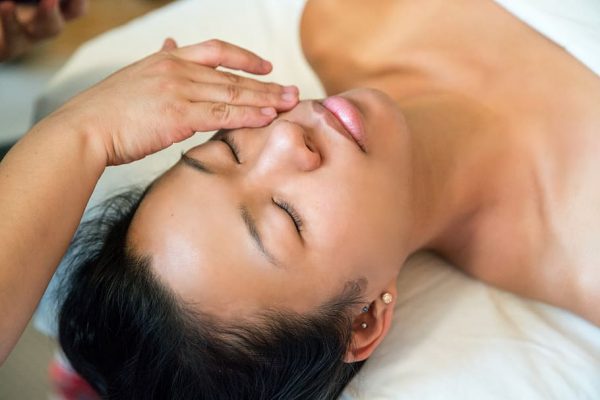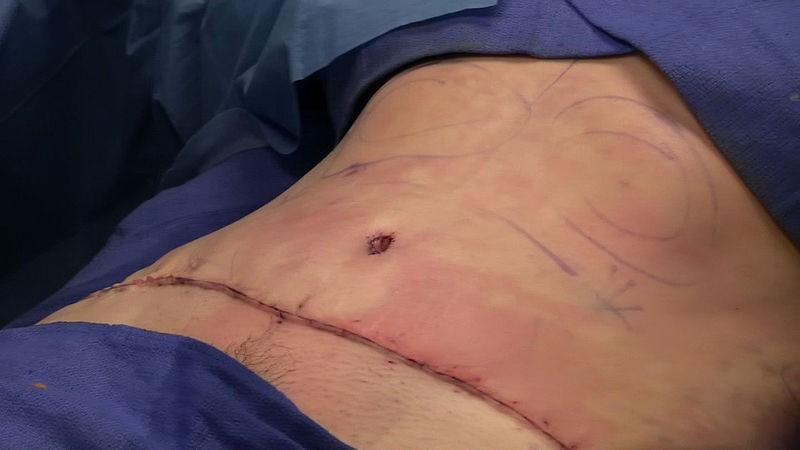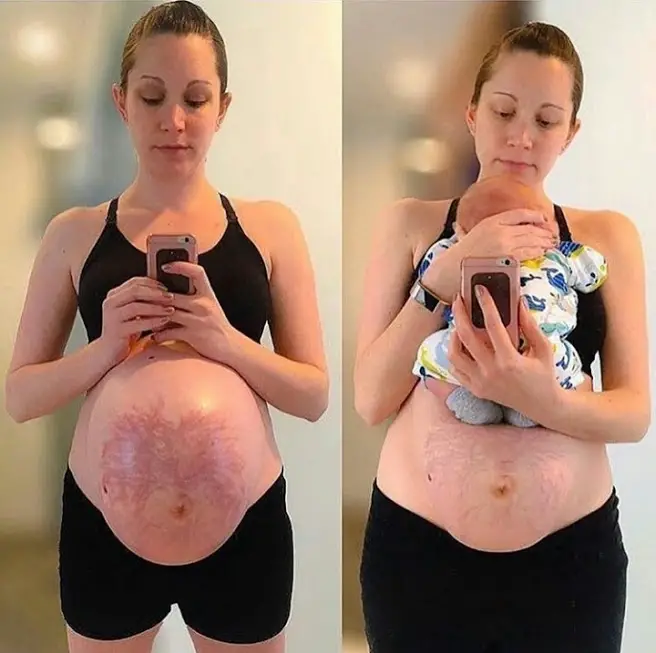Facials are part of the beauty regimen many women use. And while they are great, you should know how to care for the skin afterward. Here, we discuss problems, solutions, and care of the skin after a facial.

Table of Contents
Skin Peeling After a Facial – What to Do
It is typical for the skin to peel or to flake a little after a facial. If it is done right, the skin will feel taut and look shiny after a facial. It is only normal that it will lead to some flaking a couple of days after the treatment. It is especially true if the esthetician does the facial with a strong peel.
However, something is wrong if your skin peels heavily and does not stop peeling days after a facial. It should not peel heavily and should not last beyond a couple of days, though different skin types react differently to these treatments. Visit your doctor to report the issue if it continues.
Skin Purging After a Facial – Treatment
If you find that your skin is purging after a facial, you may have to visit a dermatologist. But note that a skin purge is a normal side effect of a facial. It does not happen to everyone, but do not panic if you find breakouts or peeling skin. Give it a few days to clear; it usually does. You should worry if the breakout is severe or the skin peels heavily.
The esthetician does some extractions to remove oil lying beneath the skin and causing blemishes during a facial. However, sometimes, not all the oil comes out. So, after a couple of days, the oil clogs the pores in a bid to come out and causes bumps. It is part of the skin’s way of cleansing itself after the treatment.
If you have a qualified and experienced esthetician, they can tell you how clean the pores are and whether or not you will break out. The breakout is not bad, and once it goes, you will notice a marked improvement on your skin.
Skin purging, simply put, is the skin shedding its dead cells, bacteria, debris, and oil that lie below the surface. You may find it appearing as clusters of bumps or pimples. Some may have whiteheads, while others may have blackheads. It can also occur as peeling skin.
What Not to Do After a Facial Peel
Some doctors will tell you there is not much to do after undergoing a facial extraction. Applying a good moisturizer will take care of the skin, and an antibiotic ointment will keep infections away if the skin feels open and raw.
But if you want to see the best results, here are a few things not to do after a facial peel:
1. Don’t Pick at Your Skin
Skin after a facial is supersensitive. So, while you typically should keep your hands away from your face, you should do it even more after a facial. You risk irritation and scarring if you pick at leftover blackheads and whiteheads.
If they are there, know that your esthetician left them alone for a reason. Sometimes, the lesions are not ripe for extraction, and forcing them leads to skin injury.
2. Don’t Use Makeup
At least, not heavy makeup. The same applies to skincare products. In fact, leave out using makeup for a few days post-facial. You see, a facial extraction or peel opens the pores and strips the skin. As a result, the skin is sensitive and vulnerable to an invasion of bacteria.
If you use makeup immediately after a facial, you risk getting an infection. There is also the risk of reducing the effectiveness of the products used during the facial. It is pretty tempting to cover up redness and other effects of the facial, but you would only be hurting your skin.
3. Don’t Exercise
Workouts, whether intense or steady-state, will make you sweat. And we know you will want to go back to the gym if you regularly exercise. But it is crucial to skip exercising for a couple of days.
Sweat and heat will irritate the sensitive skin you have after a facial. This may affect the healing process after the treatment. If you must work out, do so before going for the treatment, so you can afford to have a few days off.
4. Don’t Use a Sauna or Steam Room
A facial peel or extraction heats your skin to a certain limit, so it needs no extra heat. And going to a sauna or steam room will add heat to an already-maxed-out skin. There is a chance of hypersensitivity and broken capillaries if you use a sauna post-facial. If you must, use it before the treatment.
5. Don’t Use a Toner
Toners typically contain astringent properties and are alcohol-based. Alcohol irritates and dries the skin under normal circumstances, let alone after a facial. Since a facial is exfoliating the skin, you need no further treatment, at least not immediately.
6. Don’t Go Under the Sun
As much as possible, stay out from under the sun, at least for a few days. Do not allow sun rays to hit your sensitive skin immediately after a facial. It is more susceptible to harm from the sun, so try to allow it to heal considerably. Even then, regularly use protective gear and sunscreen.
7. Don’t Use Acne Treatments
You may be tempted to use some acne treatment if you have breakouts after a facial. Don’t; you will hurt your skin.
Treating your face to extraction or peel is enough for some time. Don’t go overboard with the treatment by using products with the potential to irritate. Avoid acne treatments, even if you see one or more pimples after the facial.
Also, avoid skincare products that contain retinoids or Vitamin C. You will only wear the skin out and interfere with the effects of the treatment. Plus, you may not feel as fast and well as when you don’t use such products.
8. Don’t Exfoliate
A facial typically incorporates a type of exfoliant, whether physical or chemical. Therefore, exfoliating immediately after a facial is counterproductive – you will damage the layer of the skin and risk inflaming it. Wait a few days before lightly exfoliating. And even then, allow your doctor to recommend products to use.
9. Don’t Go for a Massage
There is nothing wrong with getting a massage after a facial. But if the masseuse tends to rub your face, you have to let them know you are not up to it yet. Better still, avoid going for one because you may have to lie on a massage table, and your skin will rub on it.
Since the skin is vulnerable at this point, you risk getting an infection or getting inflamed skin. If you must get a massage, do it before the facial. Otherwise, do a back and neck massage while you sit in a chair.
10. Don’t Wax
Your esthetician should be the one to recommend when to resume waxing. You may get inflamed skin or scar if you wax immediately after a facial. Your skin is delicate and because waxing can be rough and irritating, you may end up ruining your wax treatment and your skin.

How to Take care of Skin After a Facial
To properly care for your skin after a facial, do the following:
1. Hydrate Your Skin
Properly hydrating your skin after a facial helps it recover faster and improves cell turnover. It can better absorb nutrients and purge itself of harmful toxins. Therefore, drinks lots of water and eat water-rich foods such as vegetables and fruits. Then, use a good moisturizer for a better effect.
2. Use Exfoliants
Now, it is true you should not exfoliate newly-rejuvenated skin so you don’t irritate and inflame it. But after a few days, or per your doctor’s instructions, ensure you exfoliate at least once a week. It helps rid the skin of leftover dead cells and other debris, leaving you with a better complexion and skin texture.
Choose a gentle and light scrub or cleanser for the job. Don’t use any product that feels heavy or that has granules, at least not yet. Allow your skin to fully recover before you go back to your usual scrubs.
In addition, when washing your face, don’t rub it hard. Go in a gentle fashion over your face, and pat it dry with a clean towel every time. Rubbing your skin will aggravate it, and not using a clean towel leaves you susceptible to infections.
3. Use a Serum
Serums tend to be gentle because most of them are light and water-based. So, when you get the go-ahead from your esthetician, you can go for a light serum, preferably one with Vitamin C.
Like we said before, Vitamin c can be harsh on sensitive skin. But you can use it after a facial if you wait a couple of days for some healing on your skin. Vitamin C serums preserve the benefits of the facial on your skin, as well as protect it from stressors and pollutants in the environment.
4. Follow Instructions
Your esthetician will draw up a skincare routine tailored specifically for you. Every skin type is different, and what works for normal skin may not be so effective for dry skin. So, follow the instructions and routine you work out with your esthetician. Not only does it help your skin heal better, but it also helps the benefits of the facial last longer.
While you take care of your skin at home, never miss an appointment with your esthetician. Combining both will give you better results than you envisaged. In addition, ensure you book another facial appointment before the current one expires.
Typically, you should get another facial four to six weeks after the previous one. That way, you make the most of your skin’s cycle of cell turnover. But if your skin is extra sensitive, you can book quarterly facial treatments to suit the changing seasons.
Click here to read these interesting articles…
Skin After Weight Loss [Problems & Solutions]
Skin After Acne [Problems & Solutions]
Skin after a Chemical Peel [Problems & Solutions]
Skin After Allergic Reaction [Problems & Solutions]
After Skin Needling [Problems, Solutions & Care]
Extremely Dry Skin After a Facial – How to Treat
After a facial, your skin will feel drawn and tight. The tightness may lead to your skin peeling because it is dry. It is all part of the process, and it will eventually disappear as your skin heals.
To alleviate the dryness, use a moisturizer on your skin. Regularly apply it during the day so that it will seep deep into your skin. Also, drink lots of water to help boost hydration from the inside. And eat water-rich vegetables and fruits. These should make dry skin better.
You may experience heightened dryness after a facial if your skin type is dry. But regular moisturizing and hydration should make it better. However, if your skin continues to experience extreme dryness days after a facial, even with intense hydration, visit your esthetician.
What to Expect After Facial Extractions
After undergoing a facial extraction, you should expect some soreness. But if you have an in-clinic treatment, your esthetician may use some antibacterial and soothing products to reduce the soreness. Some even use light therapy.
Also, expect redness of skin and purging. The redness should disappear after a day if you don’t further aggravate your skin; it is only part of the extraction. Skin purging after a facial extraction is beneficial to the overall health of your skin. It is part of the skin’s way of ridding itself of leftover debris and oil, so they don’t accumulate and cause harm in the future.
What to Expect After a Facial Peel
Here are some things to expect after a facial peel, especially if it is your first time:
1. Peeling Skin
A few days after a facial peel, your skin will start shedding. It will look like you have sunburn, but it is normal. It is part of the healing process. Don’t pick or scrub your skin at this point; gently remove the flaky skin. Better still, use a gentle cleanser to remove it.
2. Redness and Burning
You will notice some redness on your skin after a facial peel. And your skin may burn or tingle due to the stress on it. The feeling should lift after a day or so, and the redness disappears after 24 hours. Don’t try to cover it up with makeup; you may only make things worse.
You may also notice a mild swelling. It comes from the stress on the skin, which is normal, but you should take care of it, especially if it is accompanied by pain. Let your doctor know if you have this side effect, so they can recommend a mild pain reliever.
3. Dryness and Irritation
Peeling the skin chemically or otherwise stresses the skin and leaves it dry. It is a common side effect of a facial peel, whether physical or chemical. The dryness tends to result in skin that is easily irritated, at least for a couple of days. You can use moisturizer to alleviate the dryness and recommend balm to soothe the irritation.
4. Discoloration
A facial peel may cause pigmentation, especially if your skin is dark. While it is part of the process, it should get better as time goes by. Your doctor may recommend products to use to help your pigmented skin.
5. Breakout
Skin purging is likely to occur, but it is a good thing. Don’t try to pick at the bumps or treat the breakout; allow it to run its course. Treating it will mean putting harsh skin care products on delicate skin. If you have any concerns about it, consult your doctor.
6. Use of Sunscreen
It is better to stay out from under the skin until your skin feels and looks better, or until your doctor says you can. But sometimes, you cannot avoid stepping out, no matter how briefly. In such cases, use a broad-spectrum sunscreen with no less than SPF 30.
In addition, don’t use a chemical sunscreen so soon after a facial peel. Go for a physical sunscreen or sunblock. You may adversely react to the chemical ingredients in the sunscreen, and reverse the effect of the treatment.
Even with good sunscreen, use protective gear when heading out. The day may appear cloudy, but harmful sun rays may still filter through the clouds and affect your skin. Use sunglasses, scarves, hats, and other recommended clothing.
7. No Makeup
Your skin is sensitive at this point, and your pores are open. Using making will clog your pores and leave you vulnerable to infections. Wait a few days before using the lightest makeup. Better still, your doctor should tell you when you resume using makeup.
8. No Exercise
Or any activity that will stress you and cause sweating. As much as possible, keep your skin cool. Over-exerting yourself may cause inflammation. And the inflammation may cause hyperpigmentation.
If you tend to cook a lot of meals in a hot kitchen, get help for the duration of your healing. And if you work out a lot, a few days or weeks won’t hurt. You need to allow your skin to properly heal or you risk reducing the effectiveness of the facial peel.
Additionally, avoid taking hot baths or showers. A hot shower or bath will have the same effect on your skin as a hot environment. Sweating may clog your pores and hot water will strip your skin even further and increase the chances of irritation. Use only cold water and mild soap or cleanser.
Your Dermatologist Knows Best
You may need to adjust your skincare routine to accommodate your delicate skin after a facial peel. If you are used to using certain products that may be harsh, your dermatologist may ask you to discontinue use until further notice.
Basically, your skincare routine should include cleansing, washing, and moisturizing. Some people tone, but it is not a requirement. However, the first few days after a facial peel, your doctor may need you to only moisturize. Your skin will recover better if you regularly moisturize.
Also, keep yourself hydrated by drinking lots of water and eating right. It will help eliminate the dryness you feel after the treatment. Plus, it will reduce the rate of peeling skin due to dryness.
Within a week or two of the treatment, you will begin to see newer and better skin formation. Though pigmentation may linger for about four weeks, it will gradually fade until your skin looks new.
You will need to be patient if you want the best results. These treatments take time, and your consultation with your doctor should make you aware of them. Don’t stress your skin further by trying to use products to speed things up or go for other treatments. Your skin can only take so much.
Be aware that one treatment may not do the job for your skin, although it depends on the corrective treatment you want. While one treatment produces noticeable results, several treatments give excellent results. Typically, you will need several treatments before you see the best results. That means you will need to book appointments before the results of the previous treatment wear off.
However, ensure your doctor gives you the appointments based on your skin history. Don’t go overboard or try to do the treatments without proper medical consultations. As we have pointed out, different skin types react differently to treatments. And there are other factors to consider, such as age. As you get older, your skin may not be able to withstand certain procedures at certain levels or duration.
Skin After a Facial – FAQ
1. How Long Does It Take for Skin to Heal After a Facial Extraction?
Your skin will begin to feel better after the first 24 hours. Within a few days, you will notice a marked improvement in the healing process. Generally, it should not take more than one week for your skin to heal after a facial extraction.

